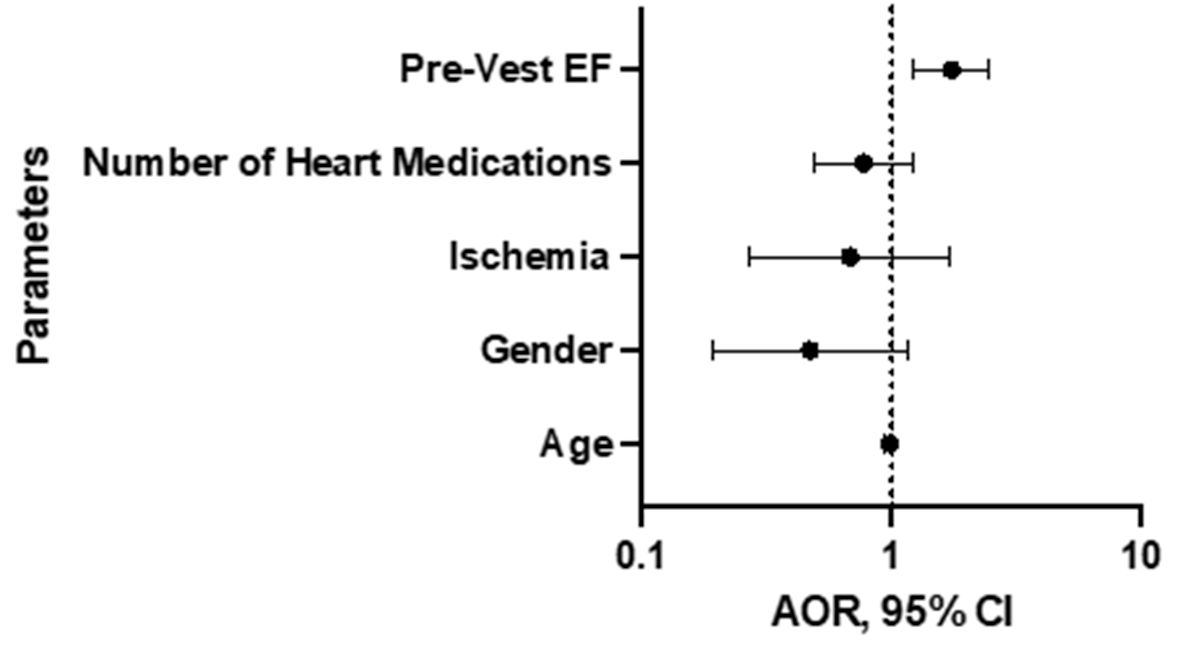
Figure 1. Results of multivariate logistic regression analysis. “Pre-Vest EF” refers to baseline EF prior to placement of wearable cardioverter defibrillator. EF: ejection fraction; AOR: adjusted odds ratio; CI: confidence interval.
| Cardiology Research, ISSN 1923-2829 print, 1923-2837 online, Open Access |
| Article copyright, the authors; Journal compilation copyright, Cardiol Res and Elmer Press Inc |
| Journal website https://www.cardiologyres.org |
Original Article
Volume 12, Number 6, December 2021, pages 340-343
Rate of Recovery of Left Ventricular Ejection Fraction in a Real-World Population of Patients Receiving a Wearable Cardioverter Defibrillator
Figure

Tables
| All (n = 101) (%) | EF recovered (n = 39) (%) | EF non-recovered (n = 62) (%) | |
|---|---|---|---|
| EF: ejection fraction; HF: heart failure. | |||
| Age, mean (years) | 61 ± 12.3 | 61± 13.2 | 62 ± 11.8 |
| Gender, female | 38 (38) | 19 (49) | 19 (31) |
| Ischemic cardiomyopathy, n (%) | 51 (50) | 19 (49) | 32 (52) |
| Nonischemic cardiomyopathy, n (%) | 50 (50) | 20 (51) | 30 (48) |
| Average number of HF medications | 2 ± 1.0 | 2 ± 1.0 | 2 ± 1.0 |
| < 15% (n = 10) (%) | 15-20% (n = 17) (%) | 20-25% (n = 27) (%) | 25-30% (n = 20) (%) | 30-35% (n = 22) (%) | 35-40% (n = 5) (%) | |
|---|---|---|---|---|---|---|
| EF: ejection fraction; HF: heart failure; ICD: implantable cardioverter defibrillator. | ||||||
| Age, mean (years) | 53 ± 9.8 | 59 ± 13.7 | 65 ± 10.4 | 63 ± 13.4 | 60 ± 11.3 | 62 ± 16.3 |
| Gender, female | 4 (40) | 6 (35) | 9 (33) | 8 (40) | 8 (36) | 3 (60) |
| Ischemic cardiomyopathy | 3 (30) | 9 (53) | 12 (44) | 8 (40) | 15 (68) | 4 (80) |
| Average number of HF medications | 2 ± 0.9 | 2 ± 1.03 | 2 ± 0.9 | 2 ± 0.9 | 1.9 ± 1.25 | 1.2 ± 0.8 |
| EF improved ≥ 35-40% | 2 (2) | 3 (18) | 9 (33) | 10 (50) | 10 (45) | 5 (100) |
| ICD eventually implanted | 3 (30) | 9 (53) | 11 (41) | 9 (45) | 8 (36) | 1 (20) |